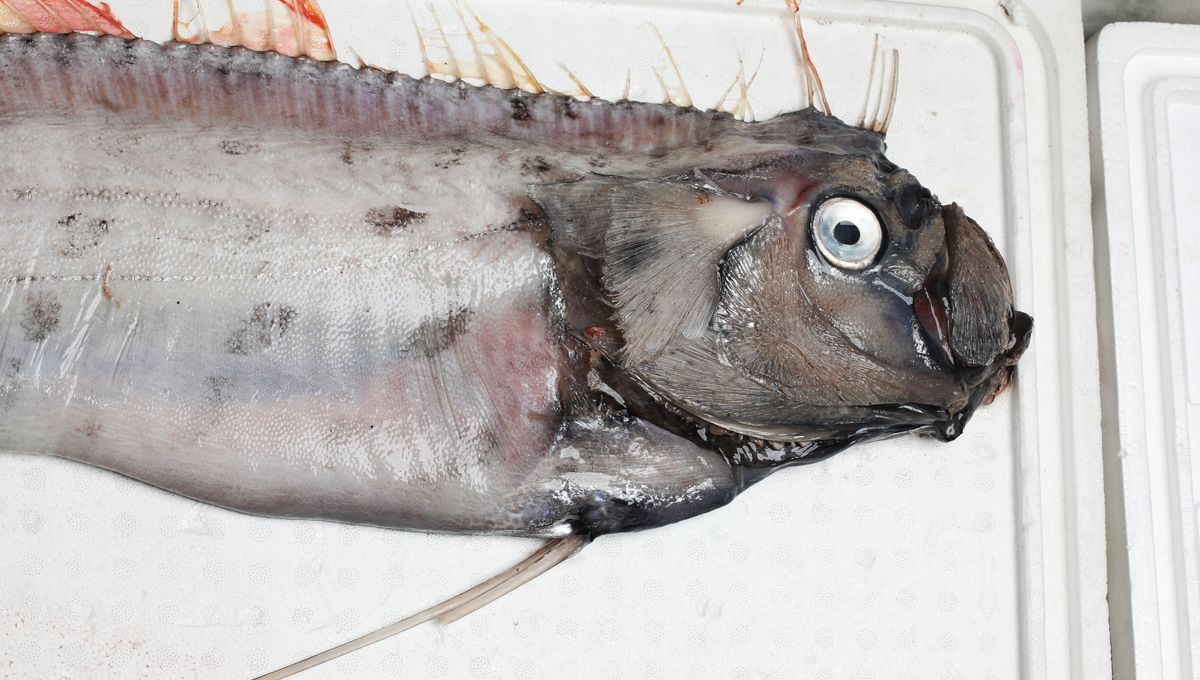
While there’s no chance of you encountering a megalodon on your marine adventures, there are still plenty of other heebie-jeebie-inducing deep-sea creatures out there to run into, as one group of kayakers and snorkelers found out last week when they came across a rarely seen giant – an oarfish.
The 3.7-meter (12-foot) long, silver ribbon-like fish was discovered floating dead at the water’s surface in La Jolla Cove in San Diego. According to the Scripps Institution of Oceanography, it’s only the 20th time that an oarfish has been recorded washing up in California since 1901.
It’s no surprise that such encounters are rare considering oarfish typically live deep within the ocean in what’s known as the “twilight zone” (mesopelagic, if we’re being proper), at depths between 200 to 1,000 meters (656 to 3,280 feet). There, they’re thought to live relatively solitary lives – besides mating – snacking on plankton, crustaceans, and even squid.
While scientists don’t know for sure why they occasionally end up washing up, it’s thought that it’s most likely due to injury, illness, or disorientation.
Studying the creatures that live in this zone is notoriously difficult for a multitude of reasons, including its inaccessibility and lack of light, making the discovery of the oarfish a golden opportunity to find out more. Luckily, some of the group who came across the fish happened to work for California Sea Grant and Scripps Oceanography.
“With help from [NOAA Fisheries] & [California Sea Grant], the group was able to coordinate with lifeguards to transport the fish to the NOAA facility,” said the Scripps Institution of Oceanography in a post to X. “Scientists from NOAA Southwest Fisheries Science Center & Scripps Oceanography will perform a necropsy to determine the cause of death.”
After that necropsy is complete, the oarfish is due to end up in the Scripps Marine Vertebrate Collection so that scientists can continue to study it.
The appearance of the oarfish has also reignited a long-held myth stemming from Japanese folklore that they are harbingers of earthquakes and tsunamis, earning them the nickname “doomsday fish”. Adding further fuel to the fire, just two days after the oarfish was found, California was struck by a 4.4-magnitude earthquake just south of Los Angeles.
Did the so-called doomsday fish predict this? No – such is the persistence of the myth that scientists have even produced a study investigating it, which thoroughly debunked the idea that oarfish can tell you if an earthquake is coming.
“Even comparing 336 deep-sea fish appearances with 221 earthquakes, only one event showed a plausible correlation,” the study authors wrote. “As a result, one can hardly confirm the association between the two phenomena.”
Source Link: Rare 3.7-Meter-Long Deep-Sea “Doomsday” Fish Found Off California Coast